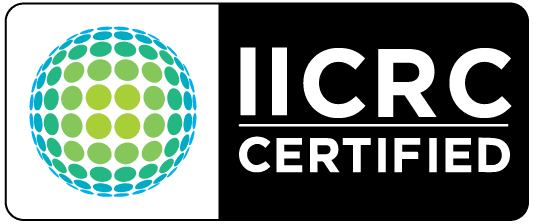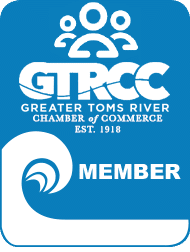Although there aren’t any specific laws requiring removal of oil tanks before selling or buying a house, the presence of an underground oil tank should prompt a few steps before a sale is finalized.
Buyers throughout New Jersey are often advised by their insurance companies and lawyers to avoid property purchases that involve underground oil tanks. The horror stories stemming from these can be so intimidating that they can kill a real estate sale.
At Meridian Environmental, our job often revolves around the sale of a residential property. That’s why we know, better than most, that the presence of an underground oil tank should NOT scare you away from purchasing that property altogether.
When armed with the proper set of knowledge, purchasing the home of your dreams should be a simple, exciting, and happy experience…regardless of whether or not there is an underground storage tank present.
If You’re the Seller – Learn About the Oil Tank Removal Process
Before trying to sell a house, homeowners should seriously consider tank removal. But what exactly is included in the process of oil tank removal? Here’s how Meridian Environmental does it:
1. Free Consultation and Inspection
At Meridian, we think it’s important to find the best course of action for tank removal on each property individually before starting work. When a homeowner calls us, the first step is a free consultation and inspection of the property. During a site visit, we locate the tank, determine its contents, prepare a sitemap and collect the information needed to draw up an accurate proposal.
2. Define the Tank Removal Project
We understand that our customers are busy. Standard operating procedure for Meridian is to present homeowners with a detailed estimate within a week of receiving their call. Once the proposal for the tank removal project is accepted and a small retainer fee has been disbursed, we begin applying for permission to carry out the work.
3. Obtain Necessary Permit for Tank Removal
Our staff will prepare the permit application and submit all the required paperwork to the township. In some New Jersey townships, the permit is ready in about a week, but the permit process can take up to 22 business days. Once the permit is approved, Meridian Environmental will pay the necessary fee to the township. Then, we will contact the homeowner to a schedule a date for tank removal.
4. Utility Location
Our office will call New Jersey 811 on behalf of the property owner to have the property surveyed and mark the location of public utilities. This will ensure there is no damage to underground utilities.
5. Preparation for Tank Removal
For most projects, the Meridian removal crew will arrive on site around 8:00 am. First, our crew will knock on the door, identify themselves and answer any question the homeowner may have at that point.
Then, we always walk the property to ensure that underground utilities have been marked and we take photos of the property prior to staring our work. Equipment matting is placed on the ground to limit the impact of the excavating equipment on the lawn and landscaping. Prior to removing any soil, the contents of the tank are pumped down as far as possible.
6. Oil Tank Removal
The tank is unearthed along with any associated piping. Any displaced soil is temporarily placed on plastic tarps. Meridian staff cut the tank open and thoroughly clean and rinse it before definitively removing it from the ground.
7. Inspection of the Oil Tank & Soil
The tank is then removed from the ground, placed on plastic and inspected for corrosion, holes and leaks. The soil in the tank pit is also inspected for any signs of a discharge.
The township inspector will check the tank to make sure it was cleaned properly and make sure there are no obvious signs of contamination in the tank excavation. If there are no leaks, the inspector provides written proof that the tank has passed and our crew will begin backfilling the excavation.
8. Removal Site Cleanup
Following removal and inspection of the tank, the excavation is compacted and backfilled to its original grade. Meridian only uses clean certified fill to backfill our excavations, as required by the state of New Jersey and local townships.
We like to leave the property the way we found it so the work area is raked out, the road, driveway and any sidewalks are also swept. When everything is cleaned up, more photos are taken and all the equipment is removed from the site.
Our crew leader then walks the property with the homeowners and addresses any concerns they may have.
9. Registration of Successful Tank Removal
Within two business days, Meridian staff files a formal request that the work permit be closed. We also submit a file to the township with all of the documentation certifying that the tank has been successfully removed from the property. A copy of all related documentation is also sent to the homeowner.
10. Replacing the Tank When Necessary
If the homeowner wants to install a new above ground tank, our technician will discuss the best location for the new tank during the initial site walk. The permit for installation will be submitted along with the removal permit. The new tank will be installed prior to removing the underground tank and any usable oil will be pumped over into the new tank. Once the old tank has passed inspection, the furnace can be restarted. We recommend that the homeowner contact a service contractor for a checkup of the system.
Looking to Sell Your House? Call Meridian First
If you want to put your home on the market, know that underground oil tanks are a major issue. Buyers and insurance companies are extremely wary of properties with oil tanks, even if they have been decommissioned.
Don’t devalue your property or ignore the deal breaker sitting under your lawn; call Meridian Environmental Services today. We are certified in the state of New Jersey remove underground oil tanks, remediate contaminated soil and treat any affected groundwater.
What If I’m the Buyer?
If you’re interested in buying a home, we have another separate set of recommendations for you coming up in our next blog! Keep an eye out for that soon or give us a call today with your questions or concerns at 732-281-1900.




